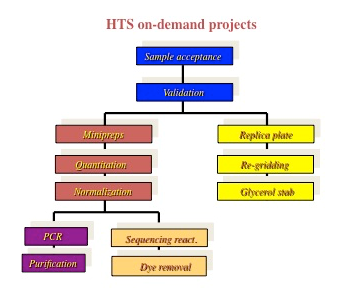The applied research performed at the SZN is dedicated to the development and implementation of 3 European Infrastructures (ERIC, European Research Infrastructures) in the framework of the road map ESFRI (European Strategy Forum on Research Infrastructures).
1. EMBRC, European Marine Biology Resource Centre, EMBRC is a European Infrastructure for marine biology, that supports services for applied and basic research, providing marine biological resources and/or access to marine environments for research and industrial purposes, with the aim of developing the Blue Biotechnologies, preserving marine biodiversity and fostering a sustainable management and exploitation of marine resources in the frame of the Blue Growth of the country. In particular, EMBRC has the aim of developing: i) industrial contracts; ii) financing for research; iii) tools and potential for research also through the creation of new services. Italy is, together with other 8 European countries, the founder of EMBRC. The Italian node EMBRC-IT is coordinated by the Stazione Zoologica Anton Dohrn of Naples and includes the major marine Research institutes.
2 . Lifewatch, an infrastructure deployed to the improvement of data observation and collection of biodiversity in Europe. The Stazione Zoologica contributes with studies about the census of marine biodiversity, the study of biology, ecology and distribution of marine organisms and experimental studies in situ in pilot stations or mesocosms. In this field, the Stazione Zoologica participates in the “Programma Operativo Nazionale Ricerca e Competitività 2007-2013”, with the BIOforIU project (PONa3 00025), in collaboration with CNR and Università del Salento;
3. EMSO, "European Multidisciplinary Seafloor and water-column Observatory" a European infrastructure dedicated to the development of deep marine observatories in Europe. The Stazione Zoologica contributes with studies of a network for technological observation in the Gulf of Naples and with the observation of biodiversity and functioning of deep marine ecosystems. In this field, the Stazione Zoologica participates in the “Programma Operativo Nazionale Ricerca e Competitività 2007-2013”, with the project TOP IN, in collaboration with INGV, OGS and CNR.
The research activity of the Scientists of the SZN need the use of the most technologically advanced instruments, highly specialized protocols and infrastructures for the breeding and maintenance of organisms for experimental use. The technological and methodological innovation needs the development of specific infrastructures.
The scientific equipment of the SZN has high-level characteristics and is accessible to the international scientific community, through collaborations and scientific exchanges or through the well-consolidated infrastructure model and access.
The research activities of the Stazione Zoologica Anton Dohrn are supported by technological infrastructures and research units dedicated to the delivery of research services. These units provide assistance and support to different analyses and share the available competences and informatic tools. The Units support the flagship programmes and research projects of the scientists of SZN and its associates.
| Description |
The IRM unit deals with the collection of material to be used for both research and outreach activities. The material collection is carried out in different coastal environments, including port areas and lagoons, using adequate gathering instruments or by scuba diving. The described activities are carried out on the basis of extensive experience and knowledge of plant or animal species required, of their habitats and distribution (on a local scale) and of their reproductive cycle, which is updated through information gathering and exploratory surveys. Sampling sites and collection methods are selected so as to ensure high quality standard of products. Scuba diving activities (related to the installation and maintenance of submerged structures and equipment) are carried out. In addition, the IRM Unit provides support to activities aimed at the recovery, transportation and release of marine animals. |
| Services provided |
Collection of planktonic organisms (from net or Niskin bottles);
In order to access the service, internal users have to fill and submit the form via e-mail at the following addresses: fabio.conversano(at)szn.it e francesco.terlizzi(at)szn.it. The request has to be sent within the Thursday preceding the week in which you want to receive the material. Users are invited to read the guidelines. External users should contact Dott. Fabio Conversano |
| Contacts |
Fabio Conversano Tel. + 39 081 5833357 e-mail: fabio.conversano(at)szn.it |
| Service Name |
BIOINformatics FOR MArine biology Bioinformatics Services, Consultancy and Education |
| Department |
|
| Description |
The bioinformatics service starts with the funding of the BIOINforMA project (Bioinformatics for Marine Biology), a Stazione Zoologica Anton Dohrn flagship project aimed at the creation of a bioinformatics service for internal activities but also as support for external requests. The main purpose of the service is the design and development of advanced and innovative methodologies for the analysis, storage and integration of biological data, thus supporting the research based on “omics” technologies. Moreover, the service offers support for the management and the maintenance of hardware resources for high performance computing (HPC). |
| Services provided |
Data analysis:
Massive data maintenance:
Design, implementation and maintenance of dedicated databases and software Education and training in bioinformatics For further information please refer to the dedicated web page at http://bioinfo.szn.it/ |
| Equipments | High Performance Computing Machines available at the Service |
| Contacts |
+39 0815833452 / +39 0812539492 bioinforma(at)szn.it chiusano(at)unina.it |

















